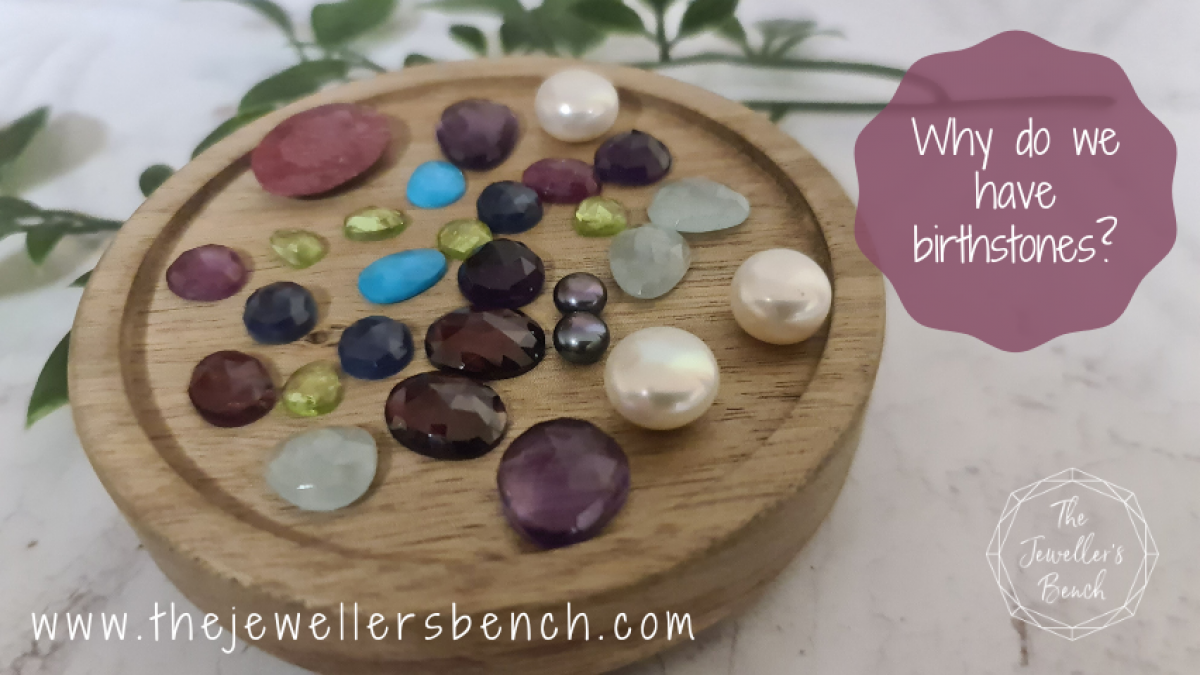Why do we have Birthstones and what do they mean?

Magical healing powers, good luck charms - or plain old marketing? Find out the origin of birthstones.
Over the centuries many cultures have believed that certain stones have healing powers, enhance positive attributes, give protection from evil or are simply good luck charms. This has evolved into the idea of particular gems becoming associated with certain months or astrological signs. Not all cultures agree with which gemstones should be associated with each month however, and so we have ended up with different birthstone lists!

The first recorded idea of a connection between the gemstones and months came from Biblical scholars, who linked the twelve stones representing the tribes of Israel on Aaron's breastplate with the twelve months of the year and the twelve signs of the zodiac. During the eighth and ninth century each of these stones became associated with one of the apostles and it became to keep twelve stones and wear one a month – if you could afford them!

In Eastern cultures astrology traditionally determined the gemstones most beneficial to a particular person, and astrological charts are often still calculated at birth to help determine your perfect stone. In Hinduism there are nine gemstones associated with the Navagraha (celestial forces including the planets, the sun, and the moon), known in Sanskrit as Navaratna (nine gems). Navaratna jewellery is a symbol of wealth and status. The setting of the stones is also believed to hold mystical powers, tied to astrology, mythology and linked to Hinduism, Jainism and Buddhism. The nine stones represent the planets, the sun, and the moon.
To find out more about the Navaratna click here!

In Western cultures the custom of wearing a single birthstone is only a few centuries old, and it thought to have begun in Germany or Poland. The (American) National Association of Jewelers (now called Jewelers of America) met in Kansas in 1912 and officially adopted a list of birthstones, combining various customs that had evolved over time but also making sure that the stones they chose would be practical for American jewellers to sell and promote in large quantities. This list has changed a little since then to keep up with fashion and with new gemstone discoveries – for example tanzanite was added to December’s birthstones in 2002. In the UK the National Association of Goldsmiths created their own standardised list of birthstones in 1937, adding in a few more secondary stones.
So, whether you want to wear or give a piece of birthstone jewellery because it celebrates a birthday, represents your loved ones or you have a belief in the values of the gemstones you have plenty of choice!
Categories: : birthstones, did you know, jewellery facts

Joanne Tinley
Tutor and Founder of The Jeweller's Bench
The Jeweller's Bench is run by Joanne Tinley. She has been making her own jewellery for as long as she can remember and left her first career as a school teacher to set up business as a jewellery designer and tutor nearly 20 years ago. She is
self-taught and like many people started with wire and beads. Learning how to solder, however, opened up a whole new world of jewellery making, one that she is keen to share!
 Joanne Tinley
Joanne Tinley 
